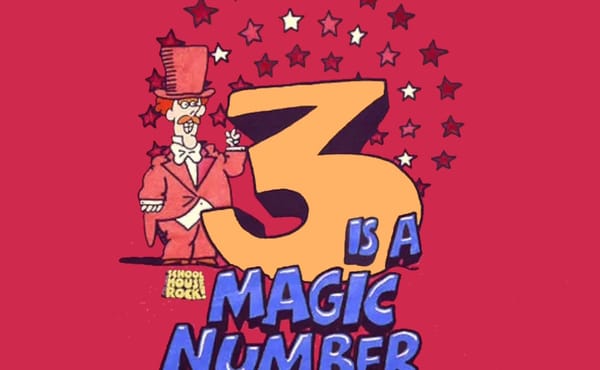This Is All Your App Is: a Collection of Tiny Details
Fair warning: this is a blog post about automated cat feeders. Sort of. But bear with me, because I’m also trying to make a point about software. If you have a sudden urge to click the back button on your browser now, I don’t blame you. I don’t often talk about cats, but when I do, I make it count.
We’ve used automated cat feeders since 2007 with great success. (My apologies for the picture quality, but it was 2007, and camera phones were awful.)

Feeding your pets using robots might sound impersonal and uncaring. Perhaps it is. But I can’t emphasize enough how much of a daily lifestyle improvement it really is to have your pets stop associating you with ritualized, timed feedings. As my wife so aptly explained:
I do not miss the days when the cats would come and sit on our heads at 5 AM, wanting their breakfast.
Me neither. I haven’t stopped loving our fuzzy buddies, but this was also before we had one two three children. We don’t have a lot of time for random cat hijinks these days. Anyway, once we set up the automated feeders in 2007, it was a huge relief to outsource pet food obsessions to machines. They reliably delivered a timed feeding at 8am and 8pm like clockwork for the last five years. No issues whatsoever, other than changing the three D batteries about once a year, filling the hopper with kibble about once a month, and an occasional cleaning.
Although they worked, there were still many details of the automated feeders’ design that were downright terrible. I put up with these problems because I was so happy to have automatic feeders that worked at all. So when I noticed that the 2012 version of these feeders appeared to be considerably updated, I went ahead and upgraded immediately on faith alone. After all, it had been nearly five years! Surely the company had improved their product a bit since then… right? Well, a man can dream, can’t he?

When I ordered the new feeders, I assumed they would be a little better than what I had before.

The two feeders don’t look so radically different, do they? But pay attention to the details.
- The food bowl is removable. It drove me crazy that the food bowl in the old version was permanently attached, and tough to clean as a result.
- The food bowl has rounded interior edges. As if cleaning the non-removable bowl of our old version wasn’t annoying enough, it also had sharp interior edges, which tended to accrete a bunch of powdered food gunk in there over time. Very difficult to clean properly.
- The programming buttons are large and easy to press. In the old version, the buttons were small watch-style soft rubber buttons that protruded from the surface. The tactile feedback was terrible, and they were easy to mis-press because of their size and mushiness.
- The programming buttons are directly accessible on the face of the device. For no discernable reason whatsoever, the programming buttons in the old version were under a little plastic clear protective “sneeze guard” flap, which you had to pinch up and unlock with your thumb before you could do any programming at all. I guess the theory was that a pet could somehow accidentally brush against the buttons and do… something… but that seems incredibly unlikely. But most of all, unnecessary.
- The programming is easier. We never changed the actual feed schedule, but just changing the time for daylight savings was so incredibly awkward and contorted we had to summarize the steps from the manual on a separate piece of paper as a “cheat sheet.” The new version, in contrast, makes changing the time almost as simple as it should be. Almost.
- There is an outflow cover flap. By far the number one physical flaw of the old feeder: the feed slot invites curious paws, and makes it all too easy to fish out kibble on demand. You can see in my original photo that we had to mod the feed slot to tape (and eventually bolt) a wire soap dish cover over it so the cats wouldn’t be able to manual feed. The new feeder has a perfectly aligned outflow flap that I couldn’t even dislodge with my finger. And it works; even our curious-est cat wasn’t able to get past it.
- The top cover rotates to lock. On the old feeder, the top cover to the clear kibble storage was a simple friction fit; dislodging it wasn’t difficult, and the cats did manage to do this early on with some experimentation. On the new feeder, the cover is slotted, and rotates to lock against the kibble storage securely. This is the same way the kibble feeder body locks on the base (on both old and new feeders), so it’s logical to use this same “rotate to lock into or out of position” design in both places.
- The feed hopper is funnel shaped. The old feed hopper was a simple cylinder, and holds less in the same space as a result. When I transferred the feed over from the old full models (we had literally just filled them the day before) to the updated ones, I was able to add about 15-20 percent more kibble despite the device being roughly the same size in terms of floor space.
- The base is flared. Stability is critical; depending how adventurous your cats are, they may physically attack the feeders and try to push them over, or hit them hard enough to trigger a trickle of food dispensing. A flared base isn’t the final solution, but it’s a big step in the right direction. It’s a heck of a lot tougher to knock over a feeder with a bigger “foot” on the ground.
- It’s off-white. The old feeder, like the Ford Model T, was available in any color customers wanted, so long as it was black. Which meant it did a great job of not blending in with almost any decor, and also showed off its dust collection like a champ. Thank goodness the new model comes in “linen.”
These are, to be sure, a bunch of dumb, nitpicky details. Did the old version feed our cats reliably? Yes, it did. But it was also a pain to clean and maintain, a sort of pain that I endured weekly, for reasons that made no sense to me other than arbitrarily poor design choices. But when I bought the new version of the automated feeder, I was shocked to discover that nearly every single problem I had with the previous generation was addressed. I felt as if the Petmate Corporation™ was actually listening to all the feedback from the people who used their product, and actively refined the product to address our complaints and suggestions.
My point, and I do have one, is that details matter. Details matter, in fact, a hell of a lot. Whether in automatic cat feeders, or software. As my friend Wil Shipley once said:
This is all your app is: a collection of tiny details.
This is still one of my favorite quotes about software. It’s something we internalized heavily when building Stack Overflow. Getting the details right is the difference between something that delights, and something customers tolerate.
Your software, your product, is nothing more than a collection of tiny details. If you don’t obsess over all those details, if you think it’s OK to concentrate on the “important” parts and continue to ignore the other umpteen dozen tiny little ways your product annoys the people who use it on a daily basis – you’re not creating great software. Someone else is. I hope for your sake they aren’t your competitor.
The details are hard. Everyone screws up the details at first, just like Petmate did with the first version of this automatic feeder. And it’s OK to screw up the details initially, provided…
- you’re getting the primary function more or less right.
- you’re listening to feedback from the people who use your product, and actively refining the details of your product based on their feedback every day.
We were maniacal about listening to feedback from avid Stack Overflow users from the earliest days of Stack Overflow in August 2008. Did you know that we didn’t even have comments in the first version of Stack Overflow? But it was obvious, based on user feedback and observed usage, that we desperately needed them. There are now, at the time I am writing this, 1,569 completed feature requests; that’s more than one per day on average.
Imagine that. Someone who cares about the details just as much as you do.









